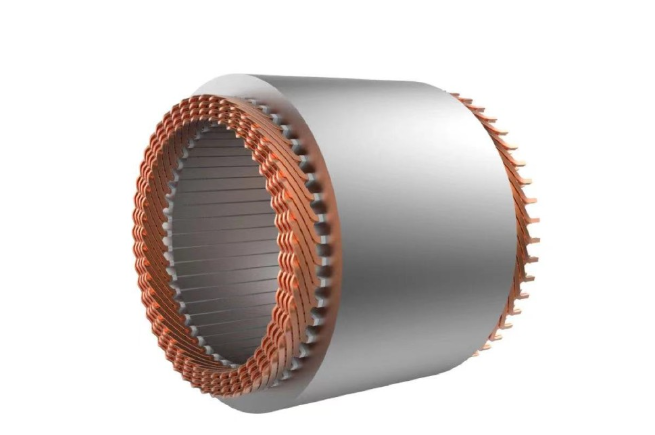
News Center
Is X-pin Motor Technology the New Future of Electric Vehicle Propulsion?
Published on.
2023-10-17 09:40
Source
In recent years, the market penetration of new energy passenger vehicles has continued to rise. Due to the high demand, existing cylindrical-wire motors have become insufficient in meeting the performance requirements of electric vehicle propulsion. Therefore, the substitution of flat-wire motors for cylindrical-wire motors is a highly certain trend for the future. Motor manufacturers are actively seeking high-capacity, high-quality production processes to meet market demands, with ongoing optimization and innovation in the manufacturing processes of flat-wire motor stators.

There are currently four types of flat-wire motor stator technologies available in the market:
1. Traditional I-pin
It does not require U-PIN forming and core insertion processes, making the manufacturing process relatively simple. However, it necessitates twisting and retaining straight segments at both ends for welding, resulting in longer end portions. It also involves expensive equipment and processes such as laser welding, which consequently leads to higher costs.
2. Hair-pin
The current mainstream flat-wire winding forms:
Electromagnetic solutions are flexible and versatile, with highly adaptable manufacturing processes that are relatively mature. In comparison to I-pin technology, the need for complex pin shapes can be eliminated, reducing the overall height further. This approach also reduces the copper required, and because it only requires welding at one end, the equipment investment is relatively lower.
4. Continuous wave winding, also known as W-pin
The manufacturing process is simpler than Hairpin, and after forming, there is no need to weld the ends. However, it demands high insulation on the copper wire. Due to its different embedding methods compared to I-pin and Hairpin, it generates more noise from slot openings, which can impose limitations on electromagnetic design. Although there are some mitigation measures and methods, it remains less flexible in electromagnetic solutions compared to I-pin and Hairpin.
4. X-pin
Due to the retention of the mature manufacturing process used in traditional Hair-pin, most of it remains unchanged, enabling motor manufacturers to maintain their current flexible electromagnetic solutions. The design and process optimization for the welding ends effectively reduce the copper required at the ends by approximately 15mm. This reduction results from eliminating the need for welding straight segments and cutting flat, which translates to significant cost savings. For example, in a traditional 220mm outer diameter, 8-layer, 48-slot stator, purely in terms of stator copper, it can save about 30 RMB. In other words, if we calculate for an annual production and sale of 200,000 units of a single vehicle model, this can achieve cost savings of about 6 million RMB per year and approximately 30 million RMB over the product's entire lifecycle. Additionally, X-pin technology can effectively reduce resistance and improve efficiency.
Previous page
Related News






